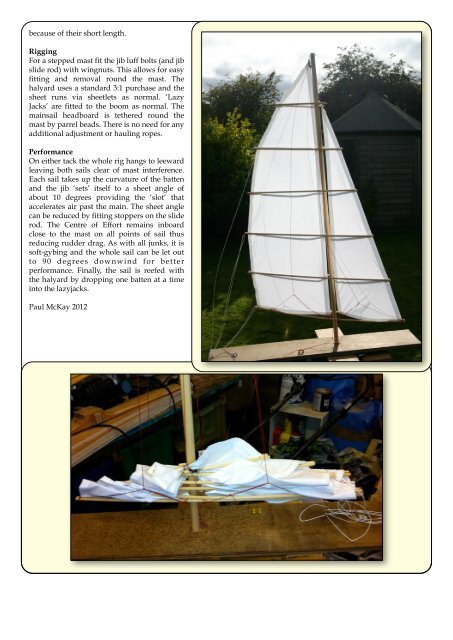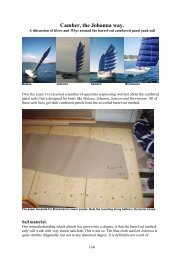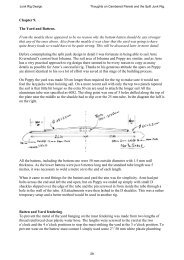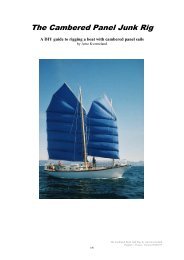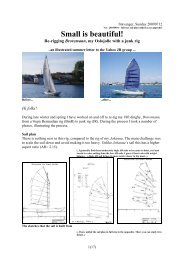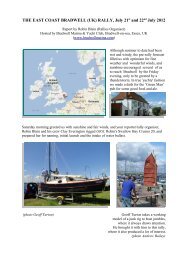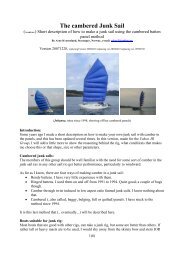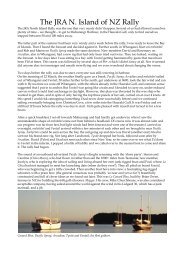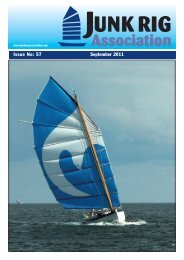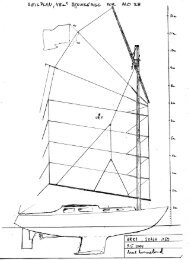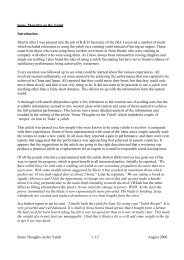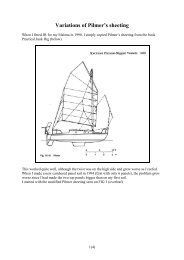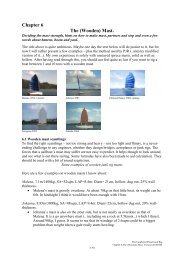The Aerojunk - The Junk Rig Association
The Aerojunk - The Junk Rig Association
The Aerojunk - The Junk Rig Association
You also want an ePaper? Increase the reach of your titles
YUMPU automatically turns print PDFs into web optimized ePapers that Google loves.
ecause of their short length.<br />
<strong>Rig</strong>ging<br />
For a stepped mast fit the jib luff bolts (and jib<br />
slide rod) with wingnuts. This allows for easy<br />
fitting and removal round the mast. <strong>The</strong><br />
halyard uses a standard 3:1 purchase and the<br />
sheet runs via sheetlets as normal. ‘Lazy<br />
Jacks’ are fitted to the boom as normal. <strong>The</strong><br />
mainsail headboard is tethered round the<br />
mast by parrel beads. <strong>The</strong>re is no need for any<br />
additional adjustment or hauling ropes.<br />
Performance<br />
On either tack the whole rig hangs to leeward<br />
leaving both sails clear of mast interference.<br />
Each sail takes up the curvature of the batten<br />
and the jib ‘sets’ itself to a sheet angle of<br />
about 10 degrees providing the ‘slot’ that<br />
accelerates air past the main. <strong>The</strong> sheet angle<br />
can be reduced by fitting stoppers on the slide<br />
rod. <strong>The</strong> Centre of Effort remains inboard<br />
close to the mast on all points of sail thus<br />
reducing rudder drag. As with all junks, it is<br />
soft-gybing and the whole sail can be let out<br />
to 90 degrees downwind for better<br />
performance. Finally, the sail is reefed with<br />
the halyard by dropping one batten at a time<br />
into the lazyjacks.<br />
Paul McKay 2012<br />
David Tyler<br />
Twisty full sails, close-reaching in very light air, with<br />
camber enough


